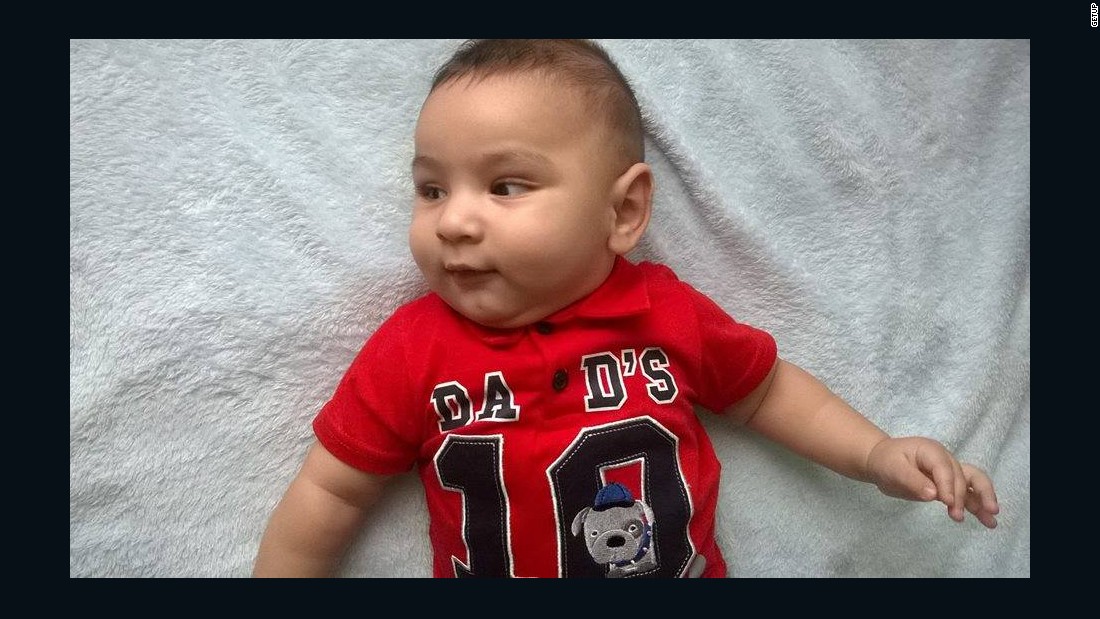Baby Samuel spent the first ten months of his life in immigration detention. Now, he’s quickly learning to navigate around his new three-room house.
“He has become very naughty, very active,” his mother Naomi said.
11-month-old Samuel is one of nearly 100 refugee children recently released into the Australian community after months or years in detention. The Australian immigration minister announced Sunday that there were no children left in detention within mainland Australia, declaring the government “very proud.”
Critics point out that those weren’t the only children under Australian immigration detention. Some 50 minors remain in Australia’s offshore processing center on the Pacific Island of Nauru, a facility that has frequently come under fire from human rights campaigners for conditions and safety concerns.
The situation has left Naomi with mixed emotions. She describes feeling “a little joy” because her son is now in decent accommodation, where she can cook for him and take him outside as much as she wants. The Australian government has provided them with a house and a living stipend — asylum seekers are not permitted to work.

Still, she’s not happy because of the emotional scars of the year she spent in the Nauru detention camp before he was born. Naomi requested that CNN not use her full name to protect her family back in her native Iran. She described the conditions on the island as more fitting to animals than humans.
Numerous refugees have complained in the past to CNN about life on Nauru, with tales of rats, sweltering tents, and multiple documented cases of sexual assault. “In my opinion, even murderers are not treated like this,” Naomi said.
Australia says, while it has worked with Nauru officials to ensure safety and security, ultimately the Nauru government is responsible for facilities there. The Nauru government did not respond to a request for comment concerning the complaints about conditions in the camp and recent protests.
In March, the government twitter account posted a series of tweets saying the refugees live safely and attend school “harmoniously” alongside the local population.
Turning back boats
Those on Nauru are given the option of settling in Cambodia. The government argues the deterrent has worked and stopped migrants from drowning at sea in rickety smugglers’ boats en route to Australia.
Those on Nauru are given the option of settling in Cambodia. The government argues the deterrent has worked and stopped migrants from drowning at sea in rickety smugglers’ boats en route to Australia.
Naomi and her husband were able to leave Nauru because she needed medical treatment during her pregnancy. Samuel was born in Australia. The government maintains that their family, along with hundreds of other refugees, can be sent back to Nauru once they are well enough to go.
Immigration Minister Peter Dutton reiterated that fact on an interview Sunday with ABC Radio. “We’ve been very clear that people who have received the medical attention or are here supporting a family member who has received that medical attention that they will go back to Nauru,” Dutton said.
It’s a possibility Naomi lives in fear of day and night.
Shen Narayanasamy is the Human Rights Director at GetUp, an organization that lead a #lethemstay campaign to allow these refugees to remain in Australia. They gathered more than 82,000 signatures in support of the cause. She said GetUp has 100 churches standing by to provide refuge to the asylum seekers if the government attempts to return them to Nauru.
“The minister would be provoking unprecedented community
backlash if he chose to do so,” said Narayanasamy.
Protests in Nauru
Asylum seekers in the detention center there have protested for more than two weeks, as some reached their 1,000th day held in detention. “Free the Children Nauru,” a Facebook page operated by some of the asylum seekers, featured a number of photos showing demonstrators, including children.
Eighteen-year-old detainee Yasaman Bagheri said for two nights teenage boys had climbed to the roof of the mess. They chanted slogans like “We want freedom and justice,” “three years in detention,” and “shame on you.”
The boys agreed to come down after a member of the Australia Border Force agreed to speak with them. They submitted a three-page letter with questions to be sent on to Canberra, according to Bagheri.
“Everyone is so tired and exhausted,” said Bagheri. She said the asylum seekers had lost hope after a recent Australian High Court decision upheld offshore processing and that she felt Dutton failed to acknowledge their plight when he announced the release of the children in Australia.
“When he says that it means he doesn’t consider the kids here as kids,” she said.
Dutton has said repeatedly that the Australian government is working to resettle the Nauru refugees to third countries and that it is providing support to the Nauru government to improve medical and education facilities.
“I’ve committed to publicly and certainly privately on many occasions, I want to get people off Nauru and Manus, but I don’t want new arrivals,” he said to ABC Radio Sunday.
Back in Australia, Naomi holds out hope that her family will never have to return to Nauru. “The only hope we have is the Australian people,” she said.
At eleven months, Samuel is already a very smart child, according to his mom. He eats a lot and mimics her moods.
Naomi believes he’ll be a useful member of society. She thinks the Australian immigration minister will regret he did not give all the refugee children on Nauru the same chance.
As reported by CNN
